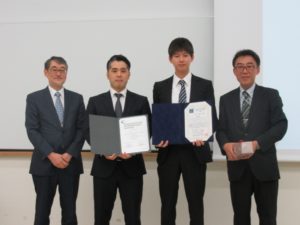The 2nd Asia-Pacific Hybrid and Organic Photovoltaics (AP-HOPV18) will be held in Kitakyushu, Japan from 28-30 January 2018.
The main topics of this conference are related to material preparation, modelling and fabrication of hybrid and organic photovoltaic cells, including dye-sensitized solar cells, organic thin film solar cells, quantum dot solar cells, and perovskite solar cells. Building upon the success of the previous AP-HOPV conference, the meeting in Kitakyushu will provide an excellent opportunity for scientists and engineers worldwide to exchange information and discussions on the latest developments in photovoltaics.
Keynote speakers include Professor Michael Graetzel (École Polytechnique Fédérale de Lausanne EPFL, Switzerland) and Materials Horizons Editorial Board member Professor Henry Snaith (University of Oxford, UK).
Journal of Materials Chemistry A is proud to be sponsoring poster prizes at this great event so submit your poster abstracts before 18 December 2017 to be in with a chance of winning!
For more details visit the conference website: http://www.nanoge.org/AP-HOPV18/home











 We are delighted to announce that Dr Serena Corr has been selected as the eighth winner of the Journal of Materials Chemistry Lectureship.
We are delighted to announce that Dr Serena Corr has been selected as the eighth winner of the Journal of Materials Chemistry Lectureship.







